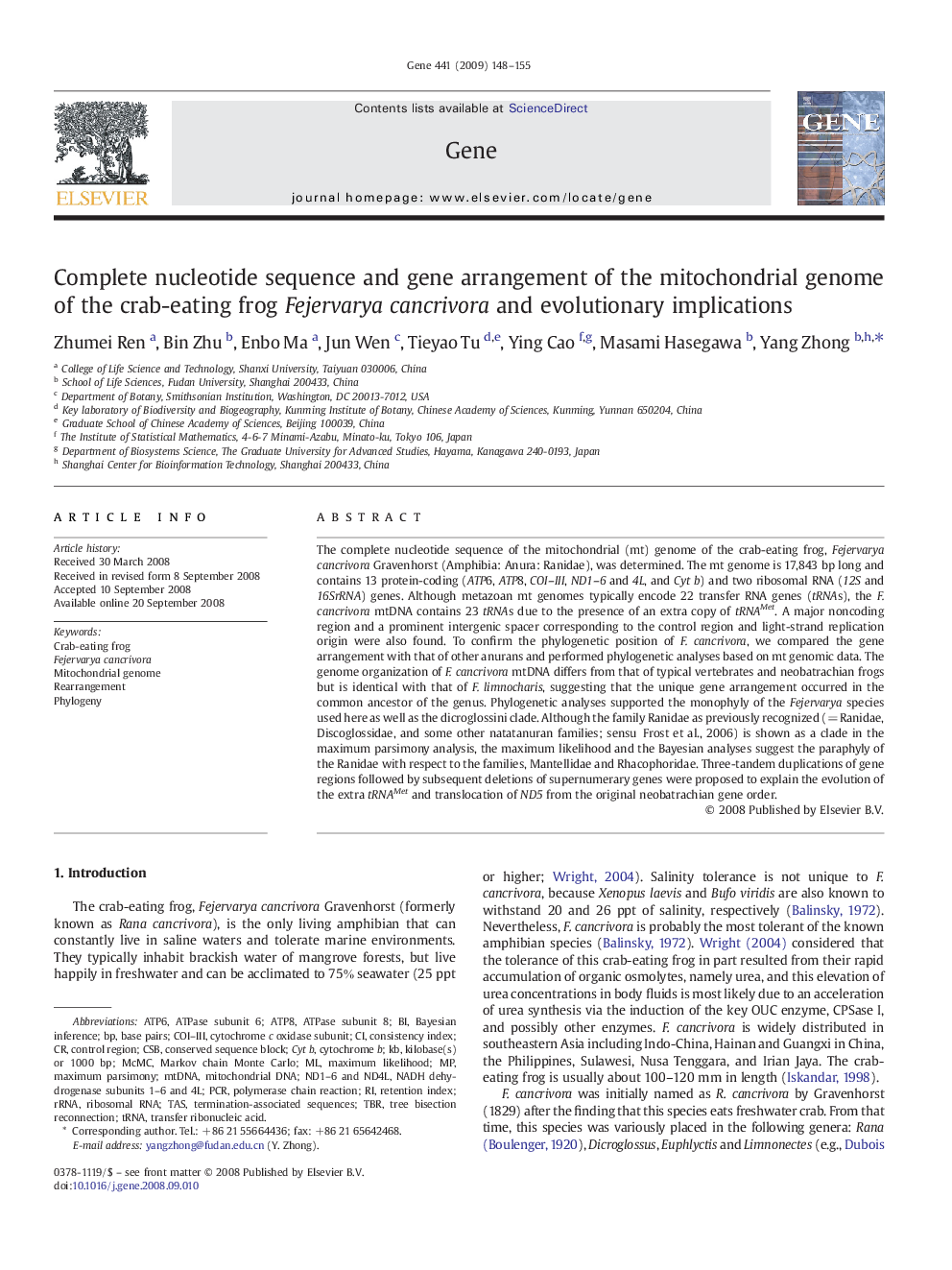| کد مقاله | کد نشریه | سال انتشار | مقاله انگلیسی | نسخه تمام متن |
|---|---|---|---|---|
| 2818802 | 1569890 | 2009 | 8 صفحه PDF | دانلود رایگان |

The complete nucleotide sequence of the mitochondrial (mt) genome of the crab-eating frog, Fejervarya cancrivora Gravenhorst (Amphibia: Anura: Ranidae), was determined. The mt genome is 17,843 bp long and contains 13 protein-coding (ATP6, ATP8, COI–III, ND1–6 and 4L, and Cyt b) and two ribosomal RNA (12S and 16SrRNA) genes. Although metazoan mt genomes typically encode 22 transfer RNA genes (tRNAs), the F. cancrivora mtDNA contains 23 tRNAs due to the presence of an extra copy of tRNAMet. A major noncoding region and a prominent intergenic spacer corresponding to the control region and light-strand replication origin were also found. To confirm the phylogenetic position of F. cancrivora, we compared the gene arrangement with that of other anurans and performed phylogenetic analyses based on mt genomic data. The genome organization of F. cancrivora mtDNA differs from that of typical vertebrates and neobatrachian frogs but is identical with that of F. limnocharis, suggesting that the unique gene arrangement occurred in the common ancestor of the genus. Phylogenetic analyses supported the monophyly of the Fejervarya species used here as well as the dicroglossini clade. Although the family Ranidae as previously recognized (= Ranidae, Discoglossidae, and some other natatanuran families; sensu Frost et al., 2006) is shown as a clade in the maximum parsimony analysis, the maximum likelihood and the Bayesian analyses suggest the paraphyly of the Ranidae with respect to the families, Mantellidae and Rhacophoridae. Three-tandem duplications of gene regions followed by subsequent deletions of supernumerary genes were proposed to explain the evolution of the extra tRNAMet and translocation of ND5 from the original neobatrachian gene order.
Journal: Gene - Volume 441, Issues 1–2, 15 July 2009, Pages 148–155